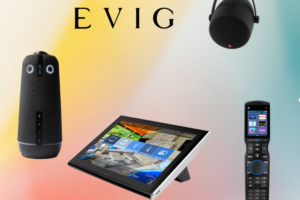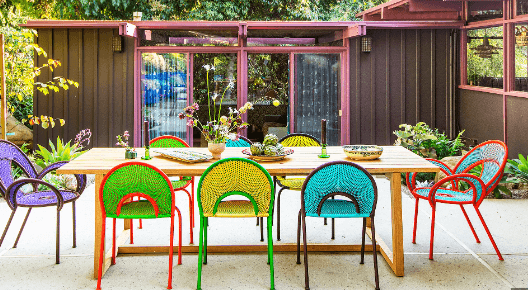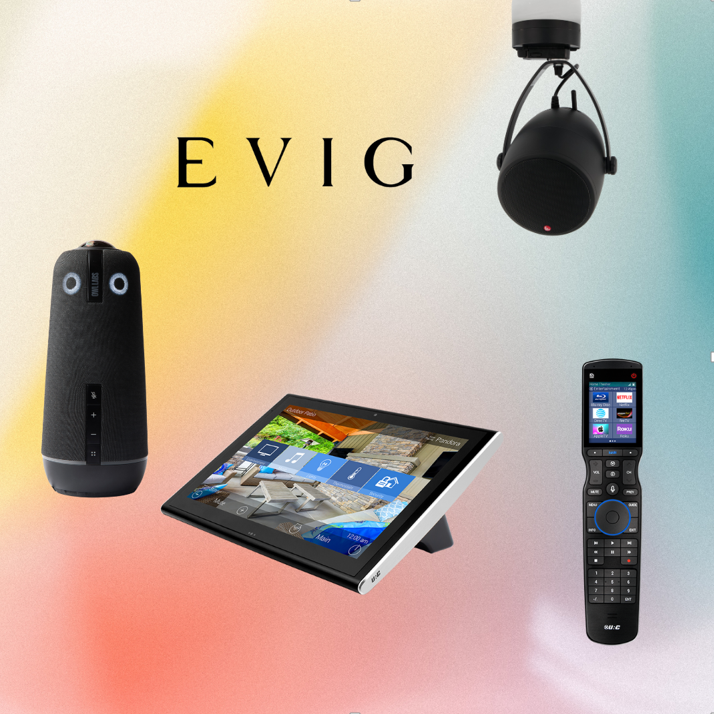Welcome to a new era of interior design, where technology seamlessly blends with artistic flair! Gone are the days when smart home features were limited to cold, futuristic gadgets. Today, we bring you an exciting array of do-it-yourself projects that will enhance your living space and integrate cutting-edge smart home functionalities. Prepare to infuse your creativity with technology as we present seven innovative DIY ideas to revolutionize your interior design game. From stunning light fixtures controlled by voice commands to hidden charging stations cleverly disguised as furniture pieces – brace yourself for an adventure into the world of smart and stylish homes!
Level One: Install a Security Camera
If you’re looking to get a little more creative with your home tech integrations, you’ll want to consider installing a security camera. Many great DIY projects can help you add one to your current decor or even create a whole new look for your home. Here are just a few ideas to get you started:
1) Hang a fashionable security camera over the fireplace.
2) Add one to your front door for added protection.
3) Install one in your child’s bedroom to keep an eye on them while they sleep.
4) Transform an old Nanny Cam into a whimsical lamp.
5) Use leftover holiday lights as night vision surveillance visualizers for your security camera.
6) Create an intercom system to communicate with visitors from the security footage live without turning on the lights.
Level Two: Add a Smart Light Switch
Adding a smart light switch to your home’s infrastructure can drastically alter the atmosphere and improve the overall living experience. Here are four fun DIY projects that you can integrate into your interior design to get started.
Level Three: Connect a thermostat to your Wi-Fi
A thermostat connected to your Wi-Fi allows you to adjust the temperature in your home from anywhere in the world. This saves you time and energy by making it easy to set the temperature just the way you like it. Using your smartphone or computer, you can also use this feature to control devices in your home, such as lights and appliances.
There are a few different ways to connect your thermostat to your Wi-Fi. One option is to install an outdoor receiver on your home’s exterior walls. Then, connect the receiver to your router via an Ethernet cable. Another option is to install a smart indoor/outdoor gateway that connects directly to your router. Once you have installed the gateway, connect your thermostat using Bluetooth or a Wi-Fi signal.
Level Four: Add a humidity and CO Sensor
Adding a humidity and CO Sensor to your home’s interior design can help keep you and your family healthy during the dry summers. A humidity sensor monitors the amount of ambient moisture in the air, and a CO sensor monitors the concentration of carbon dioxide in the air. When levels get too high or low, these sensors trigger an alert or change in function within your smart home systems.
For this project, you will need:
-An old thermostat
-A Raspberry Pi 3B+ (or greater)
-Adafruit HAT for Raspberry Pi (see below for a link to purchase)
-10k Resistor (or greater)
-8 Ohm Resistors
-Sharpie or other marker
-Wire cutters and strippers
Level Five: Set up a Home Automation System
When it comes to integrating smart home features into your interior design, several options are available. From installing voice-activated home security systems to controlling lights and appliances using Apple HomeKit or Amazon Alexa, there’s an option for everyone. However, if you’re new to all this tech stuff or don’t have the time or skills to set up these systems, you could consider hiring a professional.
Here are four DIY projects that show how to integrate smart home features into your interior design:
1. Install a voice-activated home security system: The benefits of investing in a voice-activated home security system are manifold – from reducing your workload (by taking care of tasks like activating cameras and unlocking doors automatically) to being able to enjoy peace of mind when you’re away from home.
2. Control your lights using a smart HomeKit: If you want to take control of your lights without having to learn complex programming code, then the smart HomeKit is the way to go. With this platform, you can easily turn on/off lamps and control electrical devices like DC ceiling fans and heaters using Siri commands and iPhone app shortcuts. You can also use HomeKit to link other accessories like weather sensors and garage door openers – giving you total ownership over your smart home setup.
Level Six: Control Your Appliances with an App
If you’re ready to take your home entertainment up a notch, integrate smart home features into your interior design. There are many options for adding these features without completely overhauling your décor, and following these steps can give you some great starting points.
1. Install a Smart Home Hub. A basic hub will include features like motion detection, temperature control, and listening for voice commands. This type of hub is easy to install and can be found at most major retailers.
2. Explore Smart Home rentals or buy pre-made systems. These modular systems come with all the components you’ll need to get started – just connect them! Pre-made systems can also be found online and in stores but may cost more than renting separately.
3. Integrate Elements from Other Areas of Your Life into Your Smart Home Setup. If you have other devices that rely on internet connectivity (like your TV or cable box), consider connecting them to your smart home hub using third-party accessories like Wi-Fi Range Extender or any specific Whole Home Wi-Fi System.
4. Use Appliance Control Apps. Many popular appliance brands offer their app, which allows you to control settings like brightness, volume, and even alarms from anywhere in the world! Check the manufacturer’s website or app store to find an app for your specific appliance.
5. Create Custom Task Schedules. Notifications from your smart home system can be overwhelming, so creating custom task schedules to help manage them can be helpful. This can be done through a third-party app like IFTTT or the native features of your smart home hub.
6. Regularly Test Your System. It’s important to check your system regularly to ensure everything works as expected and to make any necessary updates.
Level Seven: Install a Door sensor
Installing a door sensor is one of the simplest and easiest ways to integrate smart home features into your interior design. A door sensor will automatically activate different devices in your home when someone enters or exits the room through the door. This could be a light, fan, or even an air-conditioning unit, depending on the type of sensor you buy.














